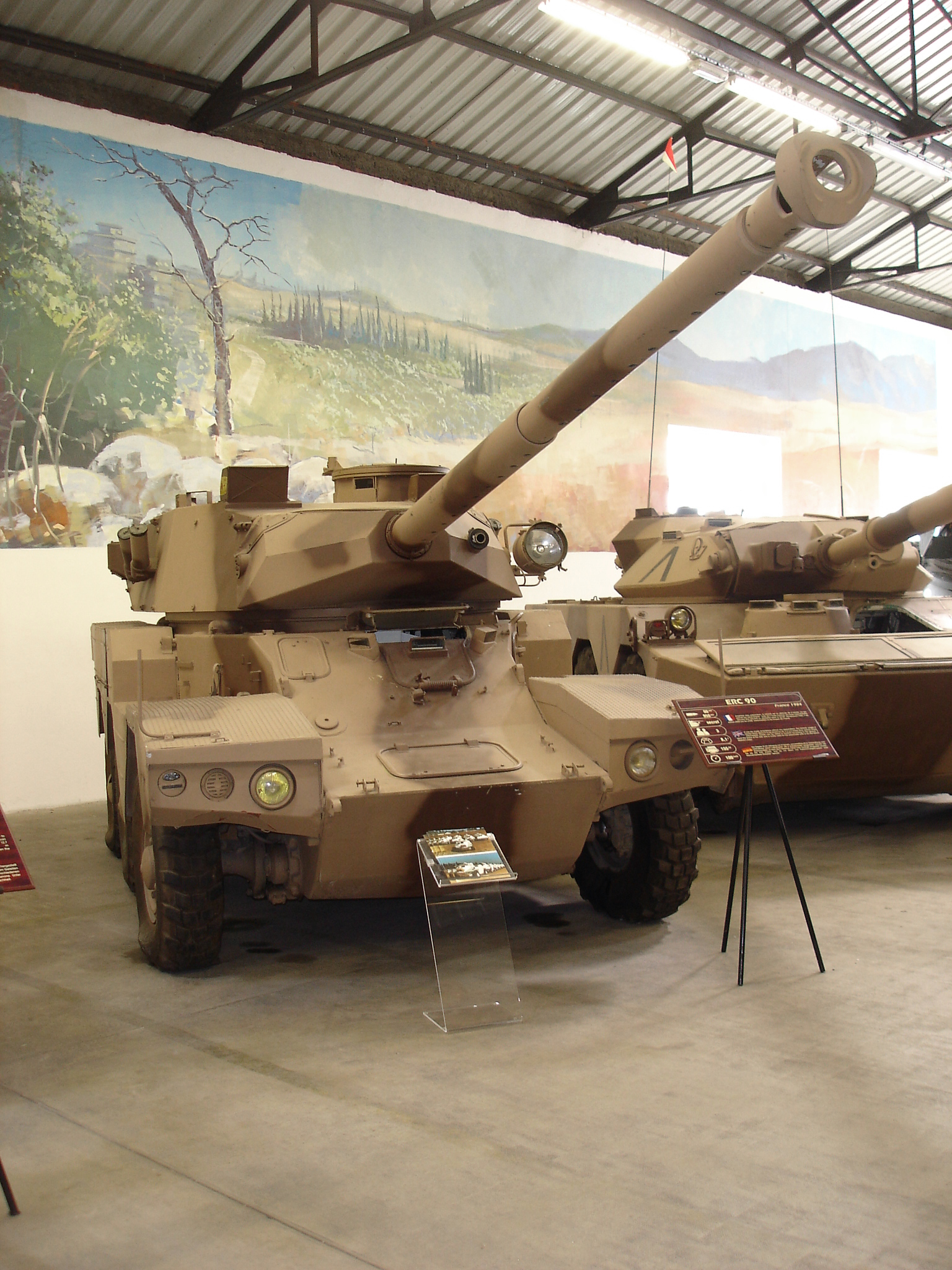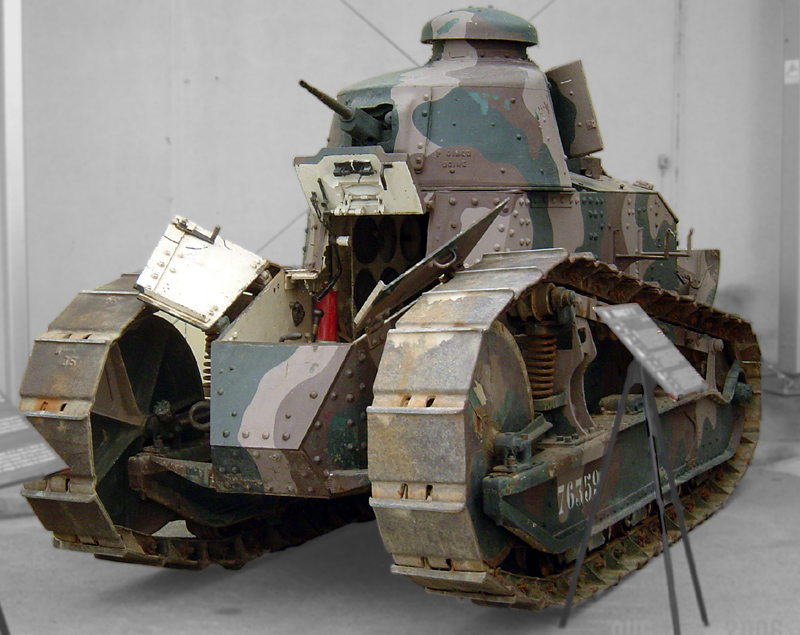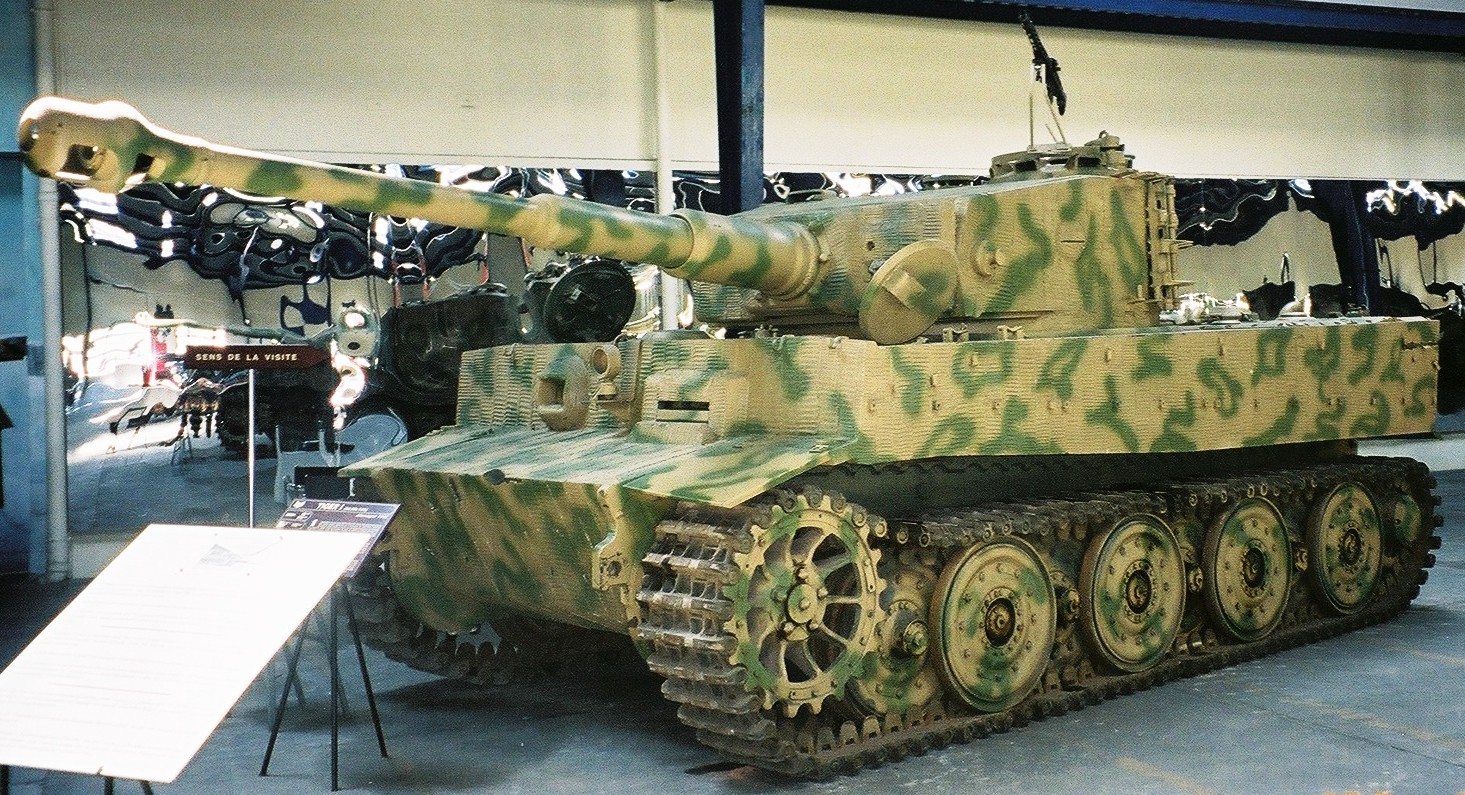Musée des Blindés on:
[Wikipedia]
[Google]
[Amazon]
 The ''Musée des Blindés'' ("Museum of Armoured Vehicles") or ''Musée Général Estienne'' is a
The ''Musée des Blindés'' ("Museum of Armoured Vehicles") or ''Musée Général Estienne'' is a


 Armoured vehicles are presented in 11 themed rooms. This section gives the highlights.
;First World War
:Four French vehicles are presented, some still in running condition:
Armoured vehicles are presented in 11 themed rooms. This section gives the highlights.
;First World War
:Four French vehicles are presented, some still in running condition:
Ppicture gallery
Map of the museum, with list of exhibited vehicles
Website of Russian friends of the museum (in Russian)
{{DEFAULTSORT:Musee des Blindes Museums in Maine-et-Loire World War I museums in France World War II museums in France Tank museums
 The ''Musée des Blindés'' ("Museum of Armoured Vehicles") or ''Musée Général Estienne'' is a
The ''Musée des Blindés'' ("Museum of Armoured Vehicles") or ''Musée Général Estienne'' is a tank
A tank is an armoured fighting vehicle intended as a primary offensive weapon in front-line ground combat. Tank designs are a balance of heavy firepower, strong armour, and battlefield mobility provided by tracks and a powerful engine; ...
museum located in Saumur
Saumur () is a Communes of France, commune in the Maine-et-Loire Departments of France, department in western France.
The town is located between the Loire and Thouet rivers, and is surrounded by the vineyards of Saumur itself, Chinon, Bourgu ...
in the Loire Valley of France
France, officially the French Republic, is a country located primarily in Western Europe. Overseas France, Its overseas regions and territories include French Guiana in South America, Saint Pierre and Miquelon in the Atlantic Ocean#North Atlan ...
. It is now one of the world's largest tank museums. It began in 1977 under the leadership of Colonel Michel Aubry, who convinced both the French military hierarchy and the local political authorities. Starting with only a few hundred tracked vehicles, it is now a significant collection which attracts visitors interested in the history of multinational tank development as well as professional armor specialists. From the beginning, Aubry made it a key policy of the museum to restore historically or technically significant vehicles to running condition.
The museum has the world's largest collection of armoured fighting vehicle
An armoured fighting vehicle (British English) or armored fighting vehicle (American English) (AFV) is an armed combat vehicle protected by vehicle armour, armour, generally combining operational mobility with Offensive (military), offensive a ...
s and contains over 880 vehicles, although The Tank Museum in Bovington, England has a larger number of tank
A tank is an armoured fighting vehicle intended as a primary offensive weapon in front-line ground combat. Tank designs are a balance of heavy firepower, strong armour, and battlefield mobility provided by tracks and a powerful engine; ...
s. Because of shortage of space, less than a quarter can be exhibited, despite the move to a much larger building in 1993. Over 200 of the vehicles are fully functional, including the only surviving German Tiger II
The Tiger II was a Nazi Germany, German heavy tank of the World War II, Second World War. The final official German designation was ''Panzerkampfwagen'' Tiger ''Ausf''. B, often shortened to Tiger B.Jentz and Doyle 1993, p. 16. The ordnance inve ...
tank still in full working order. It often performs in a public demonstration called the ''Carrousel'', which takes place each summer.
Saumur was the traditional training centre for cavalry for over a century, but now holds the Armoured Cavalry Branch Training School which is dedicated to training armour specialists. The museum had its early origins in a study collection. It is still a state institution funded by the Army, but is managed by the ''Association des Amis du Musée des Blindés'', which publishes a yearly magazine and is open to public membership. There is also a separate traditional horse cavalry museum in Saumur.
Exhibited vehicles


 Armoured vehicles are presented in 11 themed rooms. This section gives the highlights.
;First World War
:Four French vehicles are presented, some still in running condition:
Armoured vehicles are presented in 11 themed rooms. This section gives the highlights.
;First World War
:Four French vehicles are presented, some still in running condition: Schneider CA1
The Schneider CA 1 (originally named the Schneider CA) was the first French Third Republic, French tank, developed during the First World War.
The Schneider was inspired by the need to overcome the stalemate of trench warfare which on the Wester ...
, Saint-Chamond, Renault FT
The Renault FT (frequently referred to in post-World War I literature as the FT-17, FT17, or similar) is a French light tank that was among the most revolutionary and influential tank designs in history. The FT was the first production tank to h ...
and a Renault truck.
;French Campaign 1940
:All the main armoured vehicles in service in the French army are presented: Hotchkiss H39, Renault '' Char B1'' bis, SOMUA S35, AMR 33 and Renault R35 amongst others.
;Allied World War II
:US ( M3 Lee, M4 Sherman
The M4 Sherman, officially medium tank, M4, was the medium tank most widely used by the United States and Western Allies in World War II. The M4 Sherman proved to be reliable, relatively cheap to produce, and available in great numbers. I ...
, GMC DUKW "Duck"), British ( Matilda, Crusader, Churchill tank
The Tank, Infantry, Mk IV (A22) Churchill was a British infantry tank used in the Second World War, best known for its heavy armour, large longitudinal chassis with all-around tracks with multiple Bogie#Tracked vehicles, bogies, its ability to ...
Mk V) as well as Soviet vehicles (KV-1, T-34
The T-34 is a Soviet medium tank from World War II. When introduced, its 76.2 mm (3 in) tank gun was more powerful than many of its contemporaries, and its 60-degree sloped armour provided good protection against Anti-tank warfare, ...
, SU-100
The SU-100 ( Russian: самоходная установка-100, СУ-100 romanized: '' Samokhodnaya Ustanovka-''100) is a Soviet tank destroyer armed with the D-10S 100 mm anti-tank gun in a casemate superstructure. It was used extens ...
) are exhibited.
;Germany World War II
:28 well preserved German armored fighting vehicles are shown, including several Marder I, Marder III, Panzer II
The Panzer II is the common name used for a family of Nazi Germany, German tanks used in World War II. The official German designation was ''Panzerkampfwagen'' II (abbreviated ''Pz.Kpfw. II'').
Although the vehicle had originally been designed a ...
, Panzer III
The ''Panzerkampfwagen III (Pz.Kpfw. III)'', commonly known as the Panzer III, was a medium tank developed in the 1930s by Nazi Germany, Germany, and was used extensively in World War II. The official German ordnance designation was List of Sd.K ...
, Panzer IV
The IV (Pz.Kpfw. IV), commonly known as the Panzer IV, is a German medium tank developed in the late 1930s and used extensively during the Second World War. Its ordnance inventory designation was Sd.Kfz. 161.
The Panzer IV was the most numer ...
, Tiger I
The Tiger I () was a Nazi Germany, German heavy tank of World War II that began operational duty in 1942 in North African Campaign, Africa and in the Soviet Union, usually in independent German heavy tank battalion, heavy tank battalions. It g ...
, Tiger II
The Tiger II was a Nazi Germany, German heavy tank of the World War II, Second World War. The final official German designation was ''Panzerkampfwagen'' Tiger ''Ausf''. B, often shortened to Tiger B.Jentz and Doyle 1993, p. 16. The ordnance inve ...
(functioning), Jagdpanther and Panther.
;Curiosity Room
:This rooms includes some very odd vehicles, such as a Vespa 150 TAP carrying a 75 mm recoilless rifle, and some vehicles rebuilt for historical movies.
;Warsaw Pact
:A BMP-1
The BMP-1 is a Soviet Union, Soviet Amphibious vehicle, amphibious tracked infantry fighting vehicle that has been in service from 1966 to the present. BMP stands for ''Boyevaya Mashina Pyekhoty 1'' (), meaning "infantry fighting vehicle, 1st ...
, T-54, T-62
The T-62 is a Soviet main battle tank that was first introduced in 1961. As a further development of the T-55 series, the T-62 retained many similar design elements of its predecessor including low profile and thick turret armour.
In contra ...
, BTR-70, BRDM-2
The BRDM-2 (''Boyevaya Razvedyvatelnaya Dozornaya Mashina'', Боевая Разведывательная Дозорная Машина, literally "Combat Reconnaissance/Patrol Vehicle") is an amphibious armoured scout car designed and developed ...
and T-72
The T-72 is a family of Soviet Union, Soviet main battle tanks that entered production in 1973. The T-72 was a development based on the T-64 using thought and design of the previous Object 167M. About 25,000 T-72 tanks have been built, and refu ...
are the highlights of this section. Some of these are Iraqi tanks that were captured intact during the first Gulf WaCenturion
In the Roman army during classical antiquity, a centurion (; , . ; , or ), was a commander, nominally of a century (), a military unit originally consisting of 100 legionaries. The size of the century changed over time; from the 1st century BC ...
, Chieftain
A tribal chief, chieftain, or headman is a leader of a tribe, tribal society or chiefdom.
Tribal societies
There is no definition for "tribe".
The concept of tribe is a broadly applied concept, based on tribal concepts of societies of weste ...
, Conqueror), US ( M26 Pershing, M47 Patton
The M47 Patton was an American medium tank, a development of the M46 Patton mounting an updated turret, and was in turn further developed as the M48 Patton. It was the second American tank to be named after General George S. Patton, commande ...
, M48 Patton
The M48 Patton is an American first-generation main battle tank (MBT) introduced in February 1952, being designated as the 90mm Gun M48, armored, full-tracked, combat vehicle of the medium-gun tank class. It was designed as a replacement for ...
, M60 Patton
The M60 is an American List of main battle tanks by generation#Second, second-generation main battle tank (MBT). It was officially standardized as the Tank, Combat, Full Tracked: 105-mm Gun, M60 in March 1959. Although developed from the M48 Pa ...
) and German tanks ( Leopard 1, Leopard 2) are featured.
;Post World War II France
:There are some rare items in this section, including the AMX ELC bis, ARL 44, AMX-50, AMX-40, an AMX-30
The AMX-30 is a French main battle tank designed by Ateliers de construction d'Issy-les-Moulineaux (AMX, then Nexter, GIAT) and first delivered to the French Army in August 1966. The first five tanks were issued to the 501st ''Régiment de Chars ...
with a nuclear tipped Pluton
In geology, an igneous intrusion (or intrusive body or simply intrusion) is a body of intrusive igneous rock that forms by crystallization of magma slowly cooling below the surface of the Earth. Intrusions have a wide variety of forms and com ...
missile, as well as more common models such as the AMX-13
The AMX-13 is a French light tank produced from 1952 to 1987. It served with the French Army, as the Char 13t-75 Modèle 51, and was exported to more than 26 other nations. Named after its initial weight of 13 tonnes, and featuring a tough and re ...
, AMX-10P
The AMX-10P is a French amphibious infantry fighting vehicle. It was developed from 1965 onwards to replace the AMX-VCI in the French Army. It served with the French Army from its introduction in 1973 until its retirement in 2015, when it was fu ...
, AMX-10 RC, AMX 30 and the Leclerc.
All experimental French military vehicles developed that have been abandoned are kept here. The vast storage rooms are only accessible to special guests. There is an enormous library, archiving the records of the history of French armour. The museum was renamed after General Jean Baptiste Eugène Estienne, the creator of the French tank arm.
See also
;Tank museums * Cavalry Tank Museum – India * German Tank Museum – Germany *Kubinka Tank Museum
The Kubinka Tank Museum (Центральный музей бронетанкового вооружения и техники - Tsentral'nyy Muzey Bronetankovogo Vooruzheniya I Tekhniki -Central Museum of Armored Arms and Technology) is a larg ...
– Russia
* Military Technical Museum Lešany – Czech Republic
* Polish Army Museum – large collection of Soviet, western and Polish AFVs
*Parola Tank Museum
Parola Tank Museum, officially Armoured Vehicle Museum (Finnish language, Finnish ''Panssarimuseo'', Swedish language, Swedish ''Pansarmuséet'') is a Museum#military museum, military museum located 110 kilometres north of Helsinki in Parola (Hat ...
– Finland
* The Tank Museum – United Kingdom
* Yad La-Shiryon – Israel
*Base Borden Military Museum
Base Borden Military Museum is a military museum located on the grounds of CFB Borden, in Borden, Ontario, Canada. Combining four separate museums, it has numerous items, equipment and vehicles from all eras of Canadian military history, including ...
– Canada
External links
*Ppicture gallery
Map of the museum, with list of exhibited vehicles
Website of Russian friends of the museum (in Russian)
{{DEFAULTSORT:Musee des Blindes Museums in Maine-et-Loire World War I museums in France World War II museums in France Tank museums